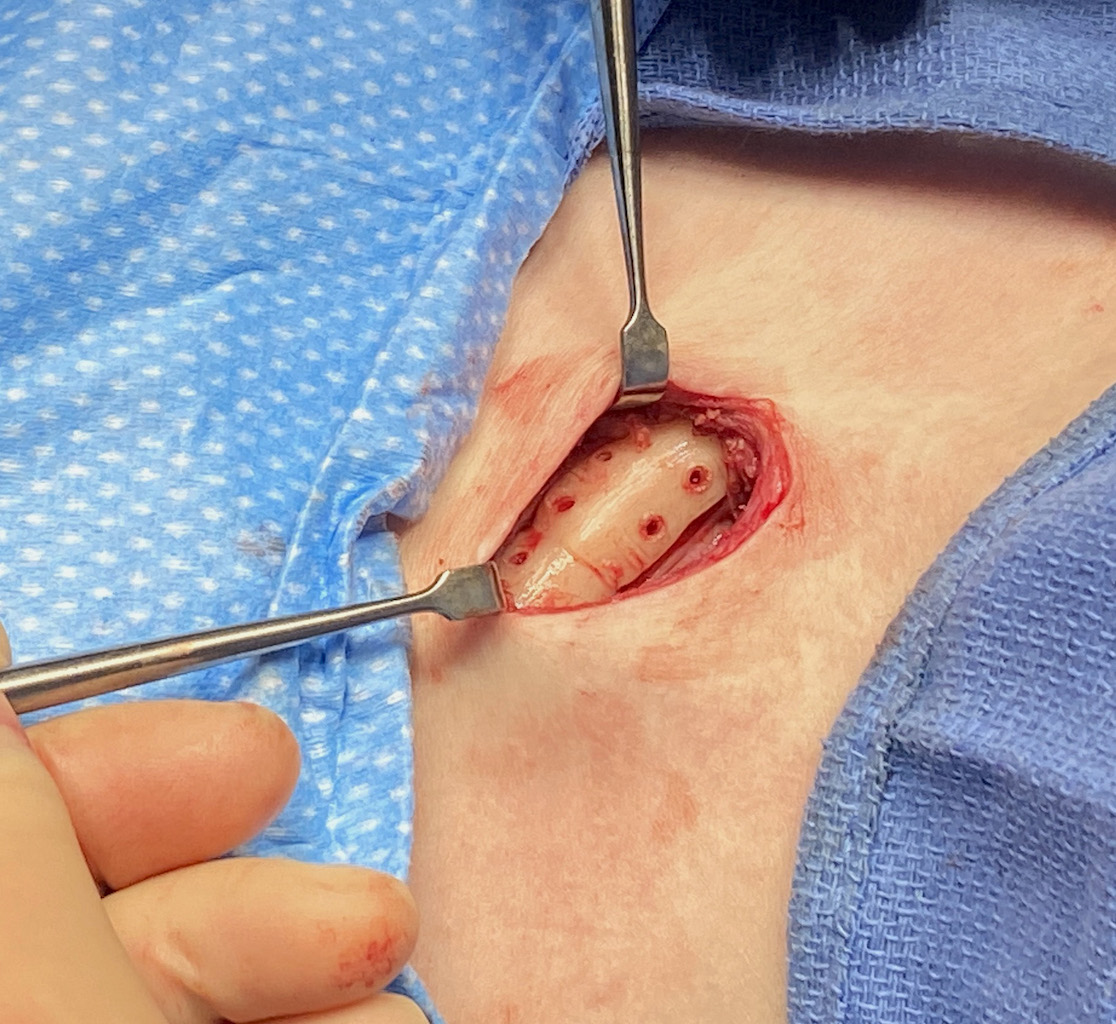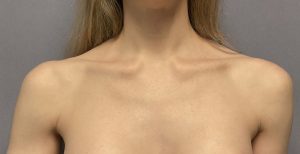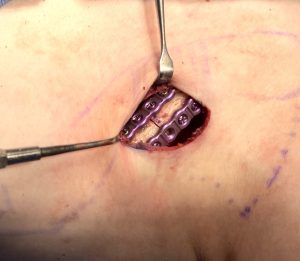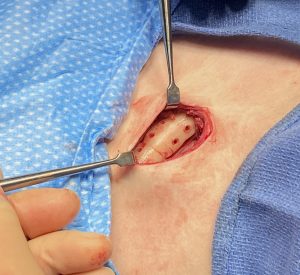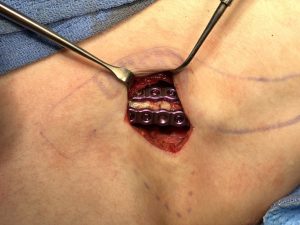Background: Clavicle reduction osteotomies has become an effective surgery for patients affected by dysphoria of their shoulder width and square shape. It works by the obvious shortening of the length of the clavicle which produces close to a linear reduction effect. But it also has a rounding effect on the shoulders given the lazy s-shape to the bone.
Good healing of the two clavicle bone ends occurs with stable plate and screw fixation. How long that takes to occur is not exactly known but the blunt ends of an osteotomy should heal together faster than that of that of non-linear patterns seen in clavicle fracture repairs. One other healing issue that separates clavicle reduction osteotomies from clavicle fracture repairs is that it is bilateral and not just on one side. So there is not a good arm to use during the recovery so the arms are exposed to a little more motion/stress than in clavicle fracture repairs.
A common question about shoulder reduction surgery is whether the titanium hardware needs to be removed. The answer is no…unless it is symptomatic for the patient. Such symptoms would be visibility, discomfort or just the need to have foreign materials removed.
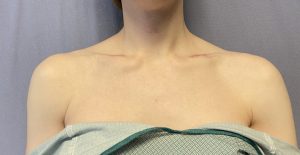
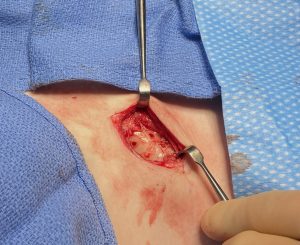
As would be expected the clavicle osteotomy sites were well healed even though a line was visible at the left clavicle site. Now the hardware is removed the bone will continue to removal with the screw holes filling in and any residual osteotomy line smoothed over.
Case Highlights:
1) The bone healing from clavicle reduction osteotomies should be structurally stable by 8 weeks after surgery.
2) The plate and screw hardware from shoulder reduction surgery is only ever removed if it becomes symptomatic for the patient.
3) In this shoulder reduction patient the hardware was removed due to visibility 9 months after the initial surgery which showed good healing of the osteotomy sites.
Dr. Barry Eppley
Indianapolis, Indiana

